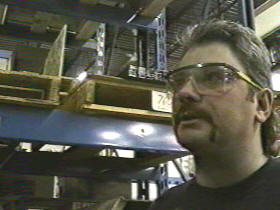Problem Solving Caveats
Design dictates performance
Design is the essence of ergonomics. How a tool, piece of equipment or a work process is designed will dramatically affect performance of use. Recall ergonomics was defined as:
"The optimization of all aspects of job performance - health, safety, quality, productivity, comfort - accomplished through the appropriate design and use of workstations and equipment, work processes and the overall organization of work and home."
Understand and make productive use of human behavior
The study of human behavior is a most fascinating and frustrating field of study. There are reasons why we do what we do; sometimes we just can not figure out what they are! For example a lift that takes too long to use will more than likely not be used.
It is possible to understand human behavior at some level, and to use this knowledge in a productive way. If we offer a solution that is contrary to the nature of human behavior, the solution will not be effective.

Do not fix without adequate analysis
Many novice analysts (and sometimes some experienced ones) cause themselves and others problems because they try to "fix stuff" without knowing why or what or when or who.
Perform an adequate analysis before offering recommendations.

Always ask why
Donít generalize from a sample of one!
Be careful not to fall into the trap of population stereotypes. Recognize the diversity that exists in the user population and design to take this into account.

Scope of Influence
If we offer a solution that is beyond the scope of influence of the individual, department, or organization, the solution will not work.
